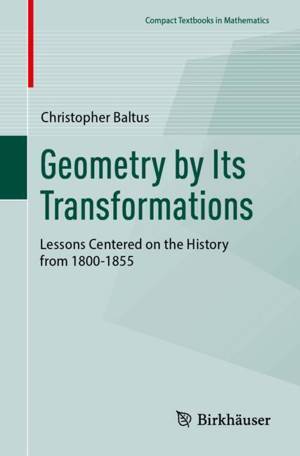
- Afhalen na 1 uur in een winkel met voorraad
- Gratis thuislevering in België vanaf € 30
- Ruim aanbod met 7 miljoen producten
- Afhalen na 1 uur in een winkel met voorraad
- Gratis thuislevering in België vanaf € 30
- Ruim aanbod met 7 miljoen producten
Omschrijving
This textbook combines the history of synthetic geometry, centered on the years 1800-1855, with a theorem-proof exposition of the geometry developed in those years. The book starts with the background needed from Euclid's Elements, followed by chapters on transformations, including dilation (similitude), homology, homogeneous coordinates, projective geometry, inversion, the Möbius transformation, and transformation geometry as in French schoolbooks of 1910. Projective geometry is presented by tracing its path through the work of J. V. Poncelet, J. Steiner, and K. G. C. von Staudt. Extensive exercises are included, many from the period studied. The prerequisites for approaching this course are knowledge of high school geometry and enthusiasm for mathematical demonstration.
This textbook is ideal for a college geometry course, for self-study, or as preparation for the study of modern geometry.
Specificaties
Betrokkenen
- Auteur(s):
- Uitgeverij:
Inhoud
- Aantal bladzijden:
- 205
- Taal:
- Engels
- Reeks:
Eigenschappen
- Productcode (EAN):
- 9783031722806
- Verschijningsdatum:
- 8/02/2025
- Uitvoering:
- Paperback
- Formaat:
- Trade paperback (VS)
- Afmetingen:
- 156 mm x 235 mm
- Gewicht:
- 340 g

Alleen bij Standaard Boekhandel
Beoordelingen
We publiceren alleen reviews die voldoen aan de voorwaarden voor reviews. Bekijk onze voorwaarden voor reviews.











